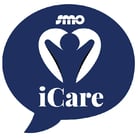.jpg)
.jpg?width=3872&name=Tips%20on%20Creating%20an%20Effective%20Employee%20Handbook%20(1).jpg)
In a recent post, Tips on Effectively Onboarding New Employees, we shared some insights and tips on how to effectively onboard new employees within your cleaning operation. One critical component of that process is the Employee Handbook. In this post we will drill down into the Employee Handbook a bit and provide a few tips on how to create a document that will actually provide value to your organization and your employees?
How to create an Employee Handbook that will be more than just a bland paper product? What information should the handbook cover? A few tips for you to consider....
Articulate Your Mission and Values
Your cleaning operation has a mission. What is it? Your organization has values. What are they? Your Employee Handbook should begin with clear and compelling language that articulates your organization’s mission and values. Describe what it is that makes your organization different. This opening section will set the tone for the entire handbook. Use it to inspire and motivate your employees.
Clearly Stipulate Your Critical Policies
What are the handful of employee policies that matter the most to your organization? The answer can be different for different types of operations. Your Employee Handbook should cover those policies that are the most critical to the success of your organization. Examples would include:
- Dress Code: Describe your company dress code in language that is clear and unambiguous. Avoid use of language that can lead to confusion or misinterpretation.
- Salary Information: Provide detailed information on your salary policy. How are the employees paid (salary, hourly, by job, etc.)? Describe your policy for overtime compensation. Again, make sure to use language that is clear and concise.
- Employee Time Off: Document your rules and requirements regarding: vacation, personal time, medical leave, bereavement leave, and any other type of time off. Clearly describe what is considered "paid" time off vs what is considered "unpaid". Make sure to follow any state requirements regarding your documentation of Employee Time Off and Leave policies.
- Employee Perks: Use your Employee Handbook to communicate the various perks that you offer to your employees. Much of your handbook will consist of your expectations of your employees. Use this section to let them know what they can expect from you.
Present Your Handbook – Create an Impression
Instead of sending your Employee Handbook as an attachment to a dry email, take the time to present it in person. Instead of a bland, featureless, PDF document, dress it up a bit with colors or creative bindings. This will give evidence to the recipient that you actually care about the document. If they see that you are vested in it they will be much more likely to be vested themselves.
How to create an employee handbook? There is single answer to that question, but, we hope we have provided you with some helpful guidance that will help you create yours.



.jpg?width=220&height=135&name=Blog%20Listing%20Image%20(13).jpg)
-1.jpg?width=220&height=135&name=Blog%20Listing%20Image%20(5)-1.jpg)

.png?width=180&height=138&name=Untitled%20design%20(25).png)


